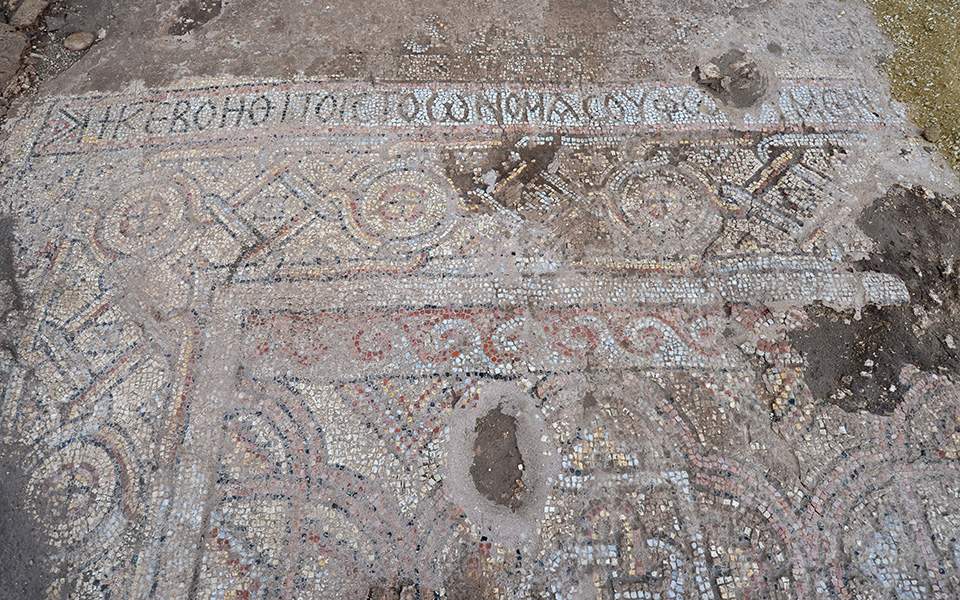
An important Christian site has been discovered in Cyprus with mosaics which bear clear inscriptions in Greek.
The excavation, conducted on the Akrotirio peninsula by the Department of Antiquities of Cyprus, began in 2007.
The twelfth round of excavations has now been completed, and its findings are being recognized for their great historical significance.
The uncovered mosaic, which is in excellent condition, bears the Greek inscription, “Lord, help those who fear Thy Name.”
The archaeological site includes a complex of two temples, totaling about 100 meters (300 feet) in length, on either side of an atrium, with areas to the south and east remaining to be investigated.
Site is covered in mosaics
However, a second atrium is being uncovered at the north side of the eastern temple.
The first temple, which was unearthed between 2007-2010, belongs to a three-aisled basilica with a transverse aisle, and is 36 meters wide and 29 meters long.
It does not have the prominent arch which forms part of a central elevated platform. All the interior floors are completely covered in mosaics.
Also important is the “presence” of Byzantine Emperor Heraclius (610-641), who had been connected with the island and with Cyprus Patriarch Ioannis personally. Also, a bust of Alexander the Great on a plaque indicates the influence of Hellenism.
The unique nature of the entire complex in its architectural layout, as well as its wealth of decoration, confirm that “this is a top monument of Christianity, of the times of Emperor Heraclius, when the empire was fighting a fierce war against Persia” according to its lead archaeologist.
Cyprus is an important site in Christian world
Dimitris Triantafyllopoulos, former professor of Byzantine archeology at the University of Cyprus, told AMNA that “this is a monument of martyrdom, a site of burial and worship of holy persons, similar to the site of St. Minas of Egypt.”
Cyprus holds a particularly important place in Christianity. The Gospel of John recounts the story of Jesus Christ resurrecting Lazarus of Bethany after he had been dead for four days.
Saint Lazarus went on to become the first bishop of the region, after he traveled to Cyprus after his resurrection by Christ.
According to Orthodox tradition, sometime after the Resurrection of Christ, Lazarus was forced to flee Judea because of rumored plots on his life; he then came to Cyprus.
There he was appointed by Paul and Barnabas as the first Bishop of Kition (present-day Larnaca). He is said to have lived for thirty more years and on his death was buried there for the second, and final, time.
Tradition says that Lazarus’ tomb was then looted and became lost during the period of Arab rule beginning in 649 AD. In 890, a tomb was found in Larnaca bearing the inscription “Lazarus, four days dead, friend of Christ.”
Emperor Leo VI of Byzantium had Lazarus’ remains transferred to Constantinople in 898. The transfer is commemorated by the Orthodox Church each year on October 17.
The transferred relics were later looted by members of the Fourth Crusade in the early 13th century and were brought to Marseille, France, but were subsequently lost once more.
See all the latest news from Greece and the world at Greekreporter.com. Contact our newsroom to report an update or send your story, photos and videos. Follow GR on Google News and subscribe here to our daily email!



